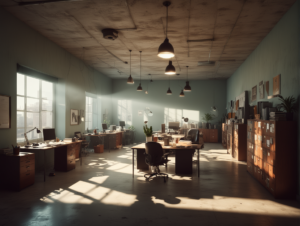Book Link 28 Waves and Wavelengths
<back next> — index
At this end of this section, you should be able to:
- Identify the impact of light and sound on emotions.
- Describe the influence of different types of lighting.
- Analyze the effect of deep bass sounds on individuals.
- Explain the role of subtle sounds in creating tension.
Overview
Important physical features of waveforms
Psychological connection: In psychology, the physical features of waveforms are important in understanding how sensory stimuli are perceived and processed by the brain. For instance, in visual perception, the physical features of light waves such as wavelength and amplitude are associated with the perception of color and brightness.
Physical properties of light and perceptual experience
Psychological connection: The physical properties of light waves, such as frequency and intensity, are linked to the psychological experience of vision. Understanding how light waves are perceived by the visual system provides insights into phenomena like color perception, visual illusions, and depth perception.
Physical properties of sound and perceptual experience
Psychological connection: The physical properties of sound waves, including frequency, amplitude, and timbre, play a crucial role in auditory perception. These properties are fundamental to understanding how we perceive pitch, loudness, and the quality of sound, contributing to our overall auditory experience and the processing of auditory information in the brain.
Real World Examples
Effect of black light in a laser tag game
Imagine the difference between black light (ultraviolet lamps) versus white, fluorescent lights. What if an office space used only the purple glowing UV lamps and laser tag used bright white light?
Would this make a difference?
In addition to the context of an office environment compared to a laser tag game room, the lighting itself influences psychological response. This can be related to psychological concepts of environmental influence on emotions and behavior.
If lighting were switched between these two environments, a person’s expectations would be confounded. A reaction might range from confused to disappointment, and even anger.
UV lights emphasize mysterious atmosphere, affecting the players’ adrenaline and cognitive responses differently than white, fluorescent lights.
In an office
Regular fluorescent lights can make you feel tired and moody and might even give you a headache. It’s because some older lights flicker, which can make you feel dizzy.
Light that looks more yellow and cozy makes you feel relaxed, while brighter, whiter light makes you feel more awake and focused. Yellow light is good for chilling out, and white light is good for working or getting tasks done.
Perception of deep bass
Consider the possible responses and reactions to deep bass sound, such as those produced by a car’s woofers. Woofers are the large speakers in a car’s audio system that are responsible for producing low-frequency sounds, including deep bass.
Can the thunderous beats of hard rock and rap music, with their deep bass, not just resonate but ignite a fire of emotion within the younger generation?
Would an older woman living alone equally appreciate this?
Intense sounds, such as those with deep bass, have the power to significantly influence our psychological responses. But even subtle sounds, when strategically used, can make a profound difference in certain situations.
Can up predict how the same sound might evoke excitement in one person while possibly triggering fear and discomfort in another?
Perception of subtle sounds
Another example is a horror movie scene in which the main character walks through a dark, empty house. The faint creaking of the floorboards in the background may not be immediately noticeable. Still, it can significantly heighten the viewer’s unease and anticipation, setting the stage for a sudden fright or reveal.
In this instance, a subtle sound adds tension and foreboding to the scene, enhancing the overall atmosphere and impact of the movie on the audience.
Summary
The way light and sound look and sound is important because it affects how our brains understand things. Different kinds of light, like UV lamps and fluorescent lights, can make us feel different emotions and act in different ways. Also, strong low-pitched sounds, like in rock music, can make some people feel strong emotions but make others feel uncomfortable.
Even small sounds, like quiet creaking in a scary movie, can make us feel tense and excited. In psychology, studying how our brains process light and sound helps us understand how we see the world. For example, different kinds of light can change how we feel, and small sounds can really change how we understand a situation.